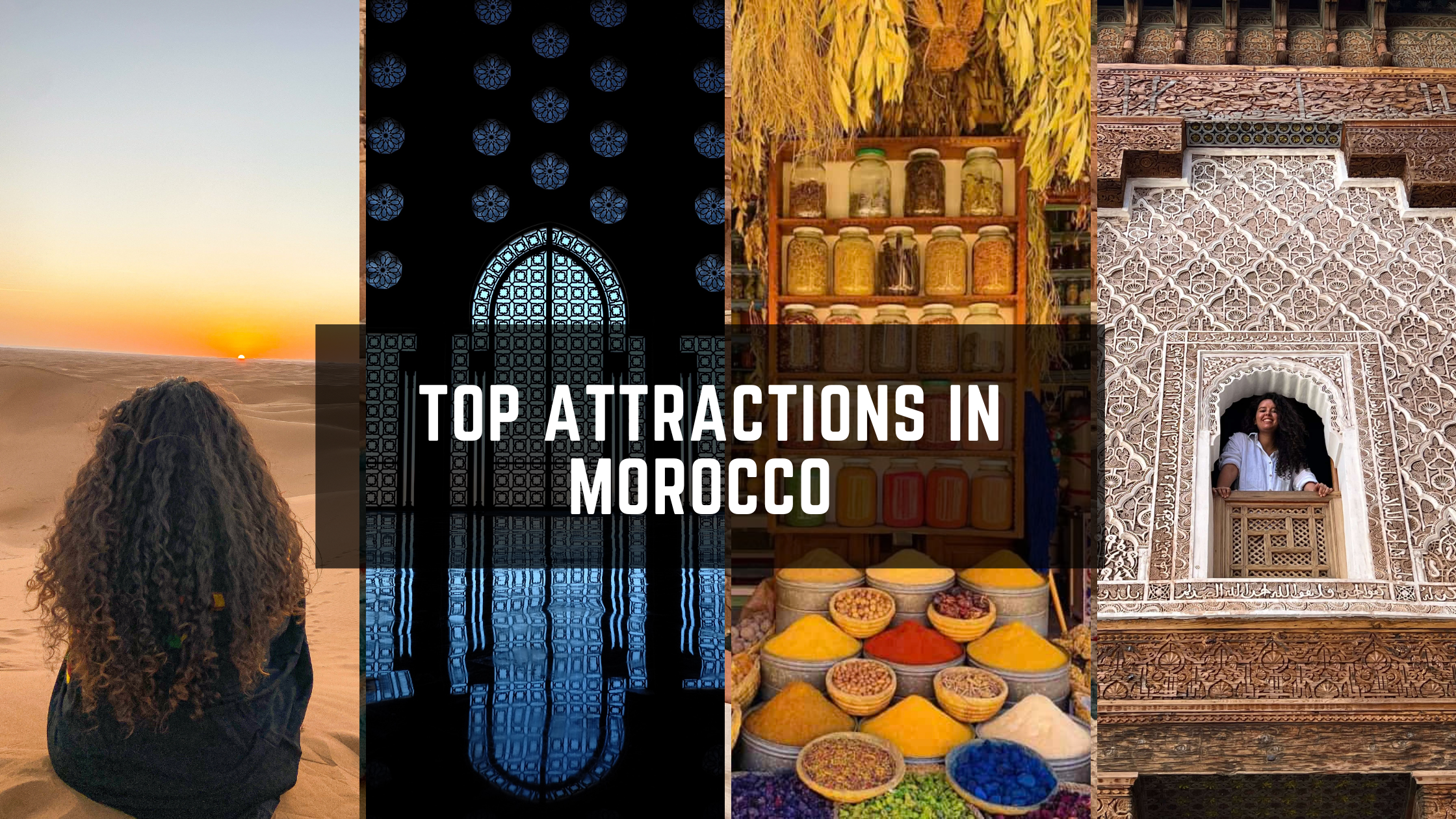Whether you’re a history buff, an adventure seeker, or a lover of cultural experiences, the top tourist attractions in Morocco have something to offer everyone. Unveil the magic of this exotic destination as you explore its diverse and captivating sites.
Top 3 Cities to Visit in Morocco
1 Marrakech: Morocco’s red city :
Immerse yourself in the vibrant atmosphere of Marrakech, a city that seamlessly blends ancient traditions with modern flair. Explore the bustling souks, where you can haggle for spices, textiles, and traditional crafts. Witness the mesmerizing performances in Jemaa el-Fna Square and marvel at the architectural grandeur of the Koutoubia Mosque.
Marrakech’s most iconic attractions :
The souks (Markets):
The term souks means simply markets, and it is an unmissable attraction even if you’re not into shopping, the souks are still a site worth experiencing. the unique and chaotic atmosphere, the haggle, the smell of spices, the magic light lamps, traditional clothes, fabric, and street food. The souks add them to unique travel experiences in Morocco’s red city.
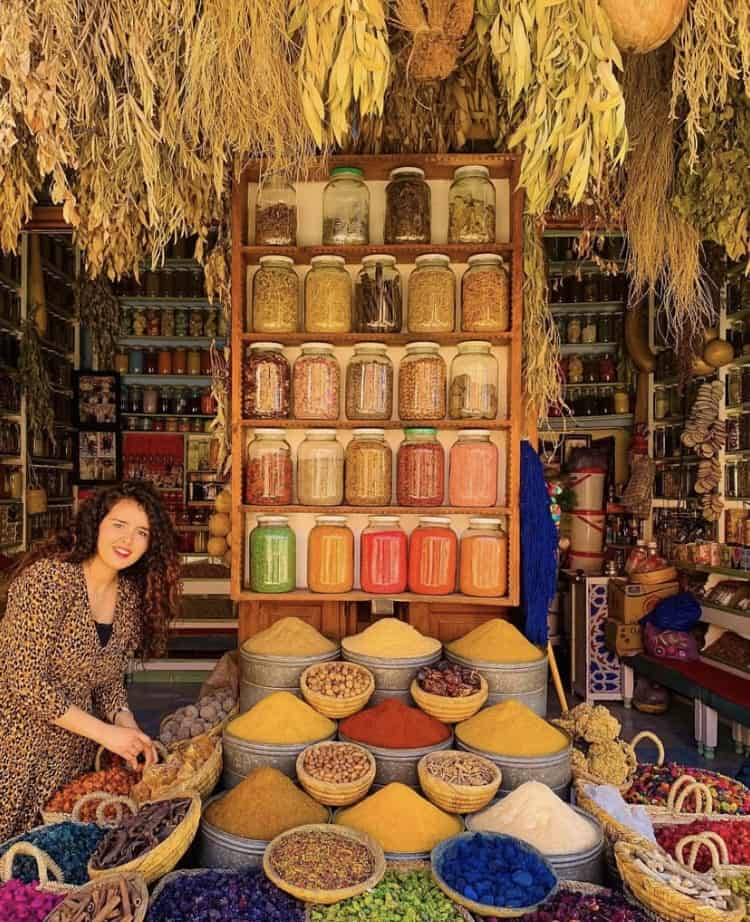
The Koutoubia Mosque:
The Koutoubia mosque is the largest mosque in Marrakech and the city’s most famous landmark with its central and magical location in the medina less than 200 meters from the famous Jeema el Fna Square, with its 77 meters minaret (at the highest point of the spire) you can’t miss the mosque during any walk in the medina or the new town as it is visible from the main boulevards of Marrakech, it is also the sight of the tourists from the terraces of the Riads, hotels, and restaurants rooftops of the Medina.
Madrassa Benyoussef:
Madrassa Ben Youssef is a mesmerizing architectural masterpiece located in the heart of Marrakech Medina. With a rich history dating back to the 14th century, this historical treasure was once a prominent Islamic school that attracted scholars from all corners of the Muslim world. For more than four centuries, it was a major destination for students from all over the world. Today it has become a distinctive tourist attraction. Every year, hundreds of thousands of tourists visit this amazing place.
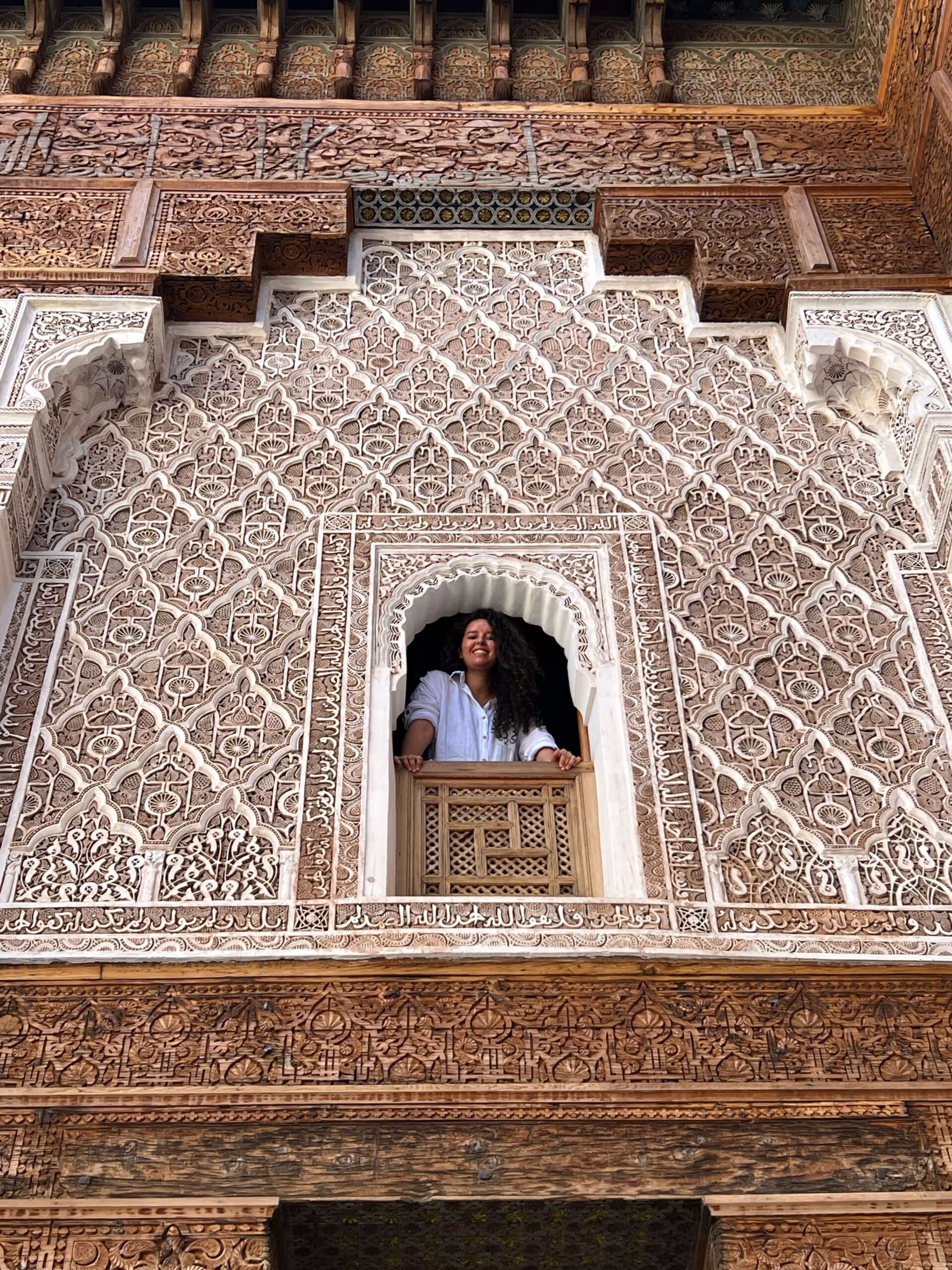
Dar ElBacha Coffee:
This beloved café is located in the heart of the city, surrounded by the hustle and bustle of the vibrant city streets. It is frequented by locals and tourists alike, making it a great place to mingle and explore the culture of this magical city.Dar El Bacha is a small, but charming café located in the heart of Marrakech. It is a popular spot for locals and tourists alike, and offers a unique coffee experience that is hard to find elsewhere. The café itself is small, but cozy, with plenty of seating options and an inviting atmosphere. The staff is friendly and knowledgeable, and the coffee is of the highest quality. The café is open all day, and is the perfect place to take a break from the hustle and bustle of the city.
Badii Palace:
The El Badi Palace is located just to the north of the Agdal Gardens in Marrakech. If you’re exploring the city on foot, you can reach in around 10 minutes’ walk from Jemaa el Fna square.Open every day from 9 am to 5 pm. El Badi Palace’s name means ‘the incomparable’ as the descendants of the prophet, the successors to the Almoravides, the Almohads, and Merinids, had to demonstrate their majesty. Their aim was to make a semblance of paradise there. The palace dates back to the late 1570s, It was built on the order of Ahmed el Mansour, a Saadi sultan who came to power in 1578.
Secret Gardens or ”Le Jardin Secret”
is Situated among the narrow, winding alleys and lanes of the city’s famous souks, just to the north of the central square, Jemaa el Fna, Le Jardin Secret has its origins in the latter part of the 16th century. A former palace on this site was destroyed after the Saadian dynasty’s decline in the late 17th century but a new one, respecting the Saadian era’s original layout for the complex, was soon built to replace it. During the 1930s, maintenance of the complex ceased and it fell into disrepair. It was not until 2008 that the idea to recreate the gardens took root and, in 2018, Le Jardin Secret, after a long program of research and construction, opened its doors to the public for the first time.
2 The Ancient City of Fez
Step back in time to the ancient city of Fes, where winding alleyways lead to vibrant tanneries, intricately tiled madrasas, and the iconic Blue Gate. Lose yourself in the labyrinthine medina, a UNESCO World Heritage site, and discover the city’s rich history and cultural heritage. This oldest imperial city in Morocco with its medina as a UNESCO World Heritage site, is a northeastern Moroccan city around 530 km from Marrakech, it is the spiritual capital of Morocco and one of the most authentic cities in Morocco.
Fez’s Top Attractions:
Chouawara Tannery
A visit to Fez is incomplete without experiencing the sights and smells of a tannery, One of the most iconic spots in the city and best-known is Chouara Tannery Located on the eastern edge of the medina; Fes el-Bali, At The tanneries all is done manually without the need for modern machinery, transforming the hides of cows, sheep, goats and camels, into high-quality leather products such as bags, coats, shoes, and slippers.
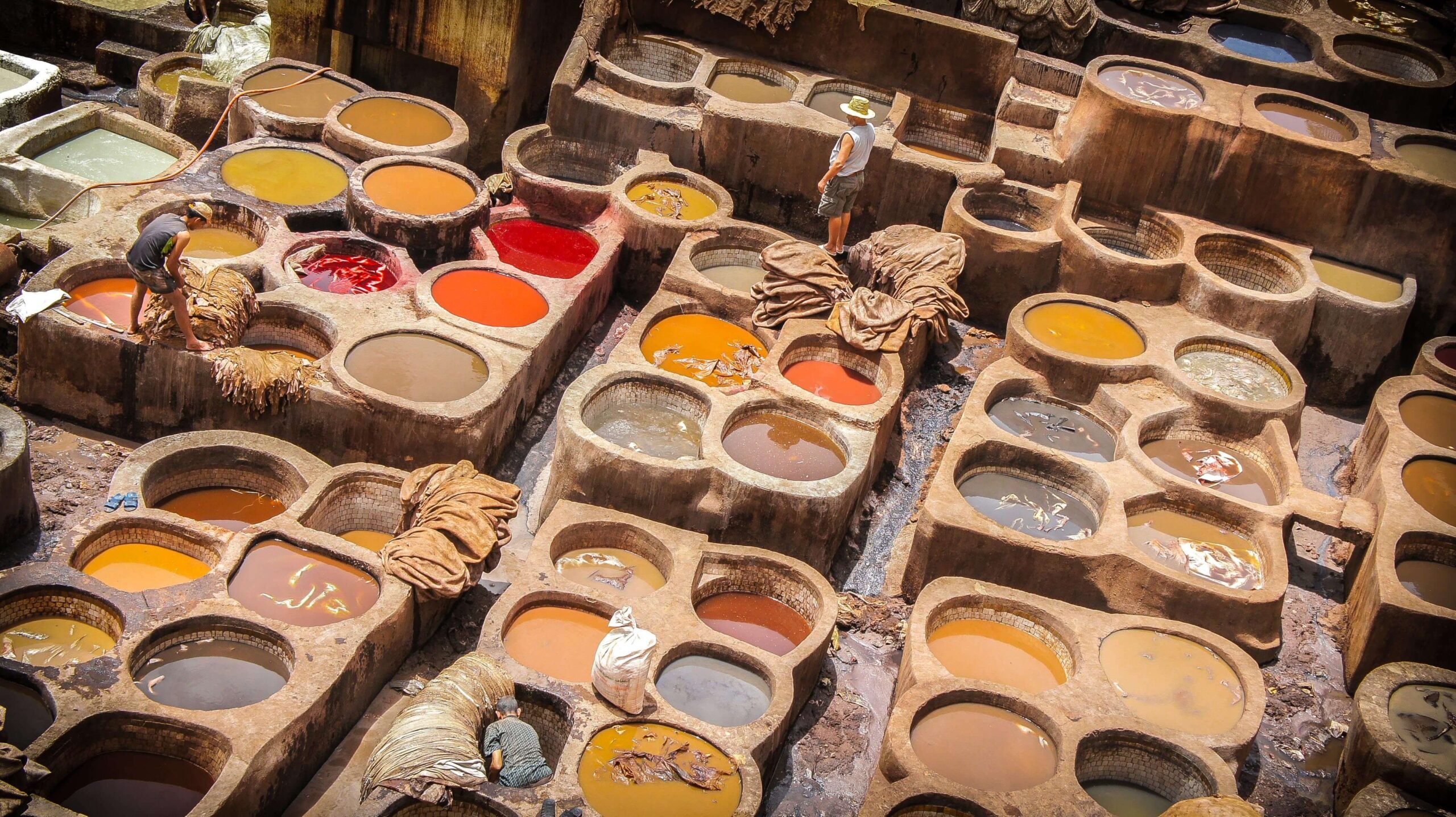
Al-Attarine Madrasa:
The al-Attarine Madrasa was built in the 14th century in the heart of the medina, “the madrassa” means (religious schools) which were used primarily for the promotion of Sunni teachings during the reign of the Marinid dynasty. Al-Attarine Madrasa took its name from the Souk al-Attarine, the spice and perfume market.
Bou Inania Medersa:
Built between 1350 and 1358, by the sultan Merenid Abou Inan, a splendid masterpiece and one of the most beautiful Merenid monuments. Unlike other madrassas, Bou Inania functioned as both an educational college and a mosque, (For this reason, it’s closed to visitors during prayer times.)
Bab Boujloud:
Also known as “The Blue Gate of Fes.” One of the most important places to visit when you are in Fez, this famous medina entrance is a recent monument built in 1913, the original gate was founded in the 12th century deliberately on a slant to block ram herds from entering.
al-Qarawiyyin Mosque & University:
The al-Qarawiyyin mosque, a religious school/college was founded in 859 by Fatima al-Fihri, a member of an elite family who emigrated from the Tunisian city of Kairouan. It is now the spiritual heart of Fez and one of the oldest universities in the world. Admire the institution’s simple yet beautiful design, decorated with Andalusian art bordered with Kufic calligraphy.
Royal Palace of Fez:
The famous seven golden doors of the Royal Palace of Fez inspire awe, leaving you to imagine its interior beauty. Although the palace is not open to the public, the exterior alone is worth a visit. Founded in the 1960s, it is located in the heart of Fes El Jadid, a district adjacent to the Old City. Thus, a visit to this iconic site offers a glimpse into the grandeur of Moroccan royalty.
Aben Danan Synagogue:
Built in the 17th century, the Aben Danan Synagogue was named after a member of a prestigious family. As one of North Africa’s oldest and most significant synagogues, it holds a special place in Moroccan Judaism. This beautiful building showcases the rich heritage of Jewish culture in the region. Renovated in 1999, the synagogue continues to be used during high holy days, reflecting its ongoing importance to the community.
Borj Nord:
Built in 1582 by the sultan of Saadian Sultan Ahmed El Mansour Eddahbi. it’s a long way from the Medina (there’s no direct walking path) It is perfect for a commanding view across the Medina with the best panorama of the city.
3 Essaouira: Morocco’s Coastal Gem:
Essaouira known also as Mogador is on the Atlantic coast 170 km from Marrakesh. the bus ride to Essaouira is around 3 hours and the view and climate is changing as we get closer to the ocean. On the way, there is a chance to stop and take pictures of goats on argan trees by the road.
Top Things to do in Essaouira :
The Ramparts:
A rampart is a length of bank or wall forming part of the defensive boundary of a castle or settlement. Essaouira has beautiful ramparts called “Skala” a UNESCO site heritage for less than 2 € visitors can explore the ramparts and listen to the waves crash and take excellent coastal and city photos.
Visit an argan oil cooperative:
Organic Argan oil cooperatives are a form of social and organizational associations. In Essaouira, there are some argan oil cooperatives that give visitors a great chance to witness the products being made. In rooms adorned with argan trees, women use ancient tools to hand-press oil from the kernels. it is interesting to see the process like an open-air museum.
Water Sports:
Essaouira’s wide, sandy beach is a great place for windsurfing and kitesurfing amongst other water sports, but swimming and sunbathing can be difficult when the winds are strong what makes it the best chance for travelers to try their hand at a new extreme activity. there are plenty of surf shops and surfing schools, as well as windsurfing schools in Essaouira that are great for beginners.

Fishing market & Fishing port:
The fish market and the fishing port are a must see Since Essaouira was Morocco’s main fishing port in the mid 1900s And being this close to the ocean it would be a big lost not eating seafood, we headed towards the local seafood market where you can select your fish from their elaborate daily catch and have it cooked for you by order.
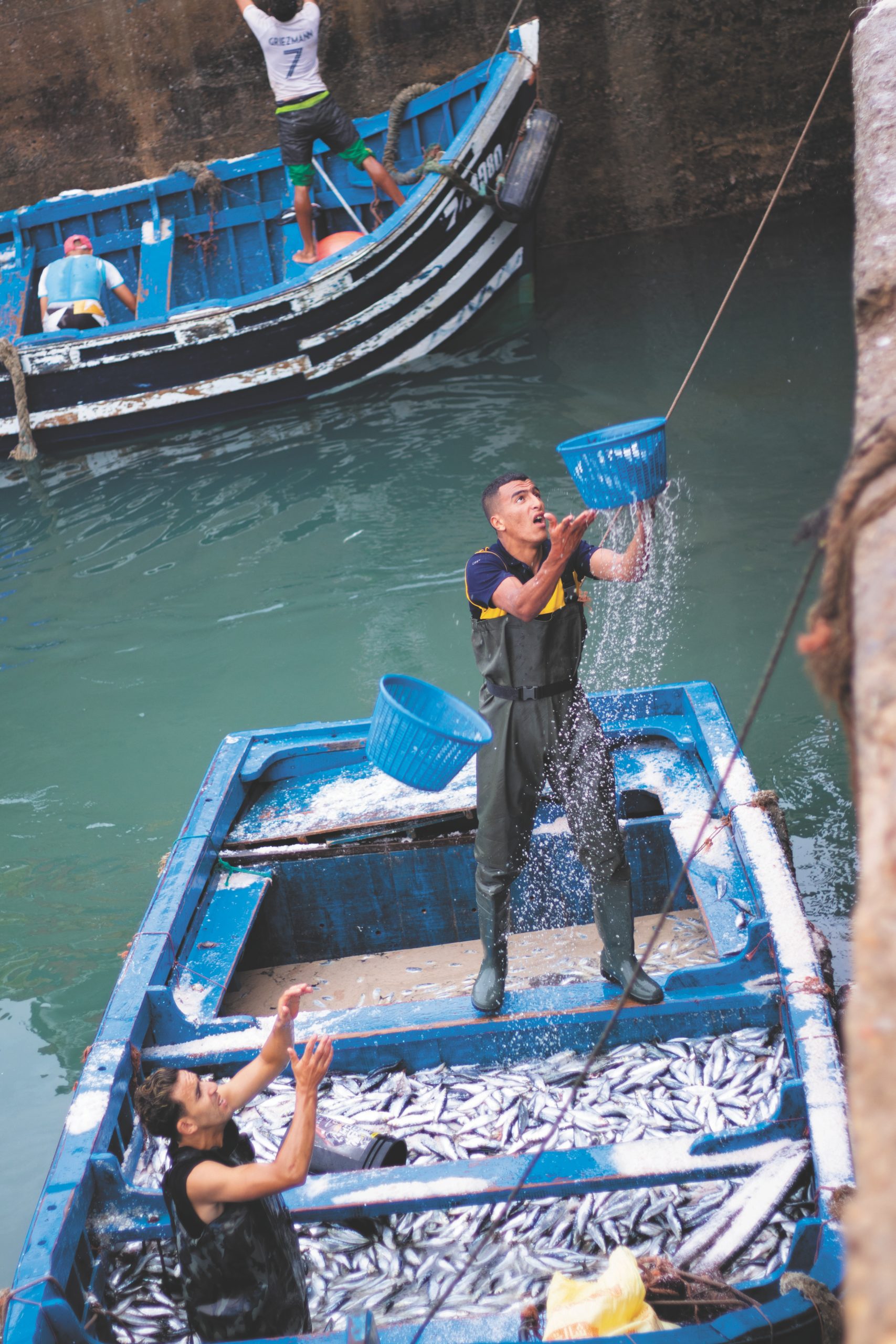
Traditional Souk:
When exploring the city and its narrow streets with plenty of shops, traditional clothes, Amlou (Moroccan peanut butter made with Argan oil), tapestries, pottery, and even food, these markets “SOUK” are a treasure trove for traditional souvenirs, and offer one of the most enchanting cultural experiences in Morocco.
The Medina streets and main square
Unlike the medinas of Fez and Marrakech, the Medina of of Essaouira is a vibrant, bustling place with so many fascinating examples of local culture, without the intense crowds, Here you can take your time, sip coffee, listen to music, and relax.
More Top Tourist Attractions in Morocco
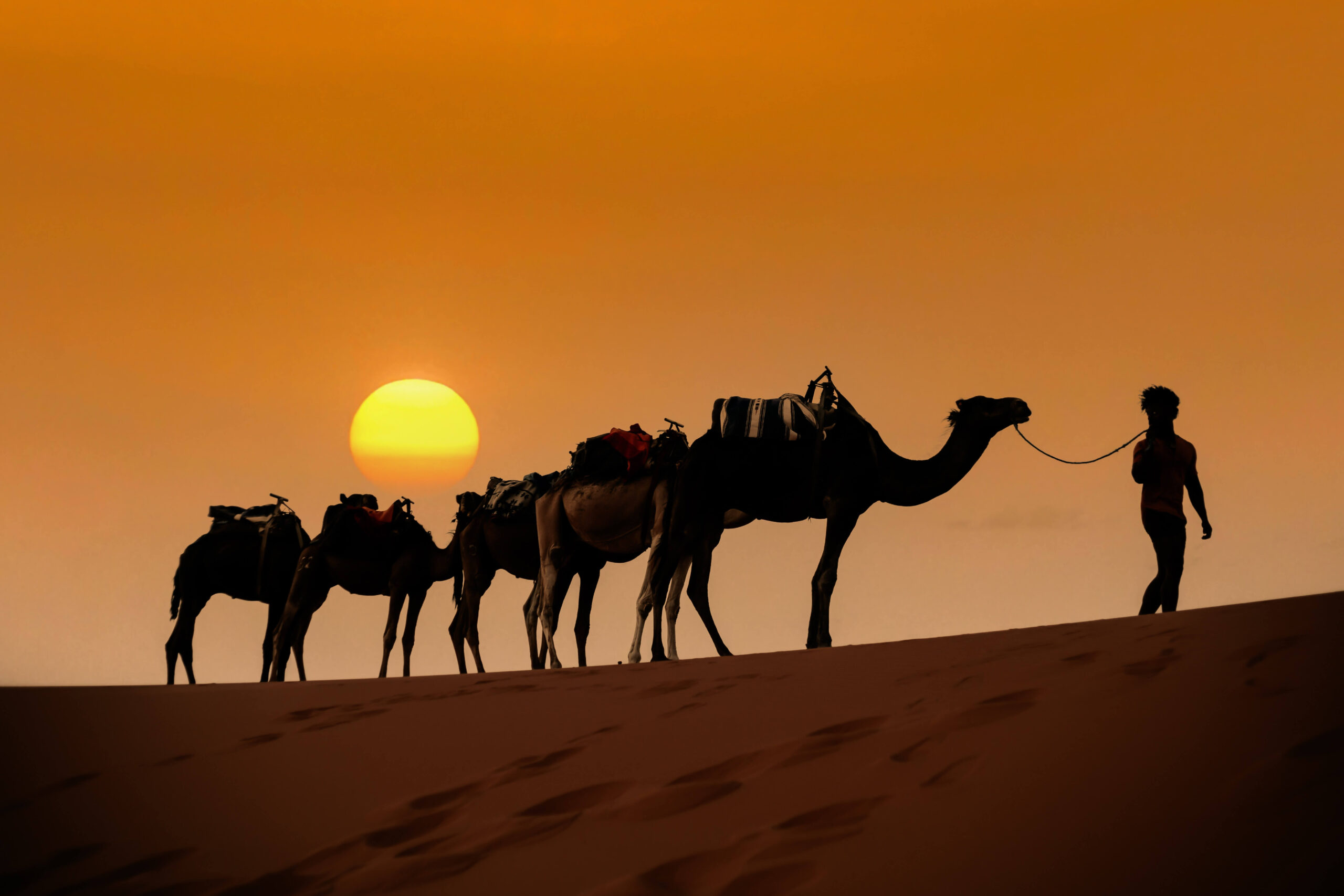
Atlas Mountains:
Embark on a scenic adventure through the majestic Atlas Mountains, where you can hike through picturesque valleys, visit Berber villages, and witness breathtaking natural beauty. The Atlas Mountains dominate Morocco’s landscape, towering over 1000 meters and spanning nearly 1/4 of the country, accommodating 1/6 of its population. Stretching 1,600 miles (2,500 kilometers) through Morocco, Algeria, and Tunisia, they are North Africa’s highest mountains, flanking the Mediterranean Sea to the north. Comprising three main chains—the High Atlas, Middle Atlas, and Anti-Atlas—the High Atlas stands tallest, featuring Mount Toubkal near Marrakech, a must-see peak.
Sahara Desert:
When we think of the desert, we often picture vast dunes stretching endlessly. However, the Moroccan Sahara is much more diverse. The landscape is generally rocky, with only a few areas featuring the iconic dunes. These dunes cover about 20% of the entire Sahara, so travelers with limited time often focus on these areas. The Sahara Desert is one of the world’s most famous natural wonders. For many visitors to Morocco, exploring the Saharan dunes is a must-do experience. You can enjoy a thrilling day trip to the dunes or embark on an extended stay to soak in the desert’s magic. Spending a night at a desert oasis under a star-filled sky is an unforgettable adventure. If you’re not taking a formal tour, places like Merzouga, Mhamid, and Zagora offer bus connections and a variety of desert camps for all budgets.
Tangier:
is one of the oldest cities in Morocco. It is over 2,500 years old with a beautiful mix of cultures and nationalities. This is mainly because of its strategic location. Tangier is located on the Strait of Gibraltar, making it the portal to Europe and home to different cultures and religions. The city is crucial to the trade between the two continents, Europe and Africa. One can never feel bored in Tangier, thanks to its unique diverse setting – nestled between the sea and rolling hills. Its land is also the arena where culture and traditions mingle and clash, giving birth to a fresh diverse culture.
Chefchaouen:
Located in the northern part of Morocco, Chefchaouen is known as the blue pearl of Morocco. It is a small city nestled in the Rif Mountains, offering a unique and modest charm. This town stands out as one of the most beautiful places I have seen. According to some theories, the city was painted blue to repel mosquitoes, as they are not attracted to this color. Another theory suggests that the blue color holds religious significance, particularly in Judaism, representing the sky and heaven. When Jewish refugees settled in the city during the 1930s, they painted their houses blue as a symbol of their faith and hope for a brighter future. Throughout the years, the blue color became an integral part of Chefchaouen’s identity, shaping its architecture and streets, and earning it a special place in the hearts of many visitors to Morocco.
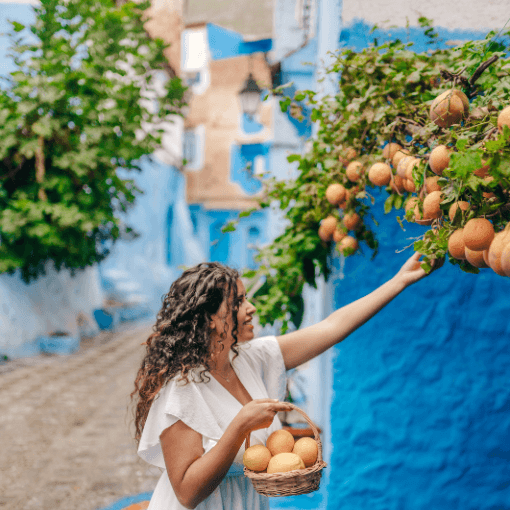
Ait Ben Haddou:
stands as Morocco’s most renowned ksar and one of its most captivating landmarks. Located near Ouarzazate, this fortified village showcases Southern Moroccan architecture. The ksar, a cluster of dwellings within defensive walls, features corner towers for added protection. Nestled in the foothills of the southern slopes of the High Atlas mountains, it includes homes, community areas, a mosque, a synagogue, graveyards, shops, and cafes. this ancient Ksar is one of the Top Tourist Attractions in Morocco to visit.
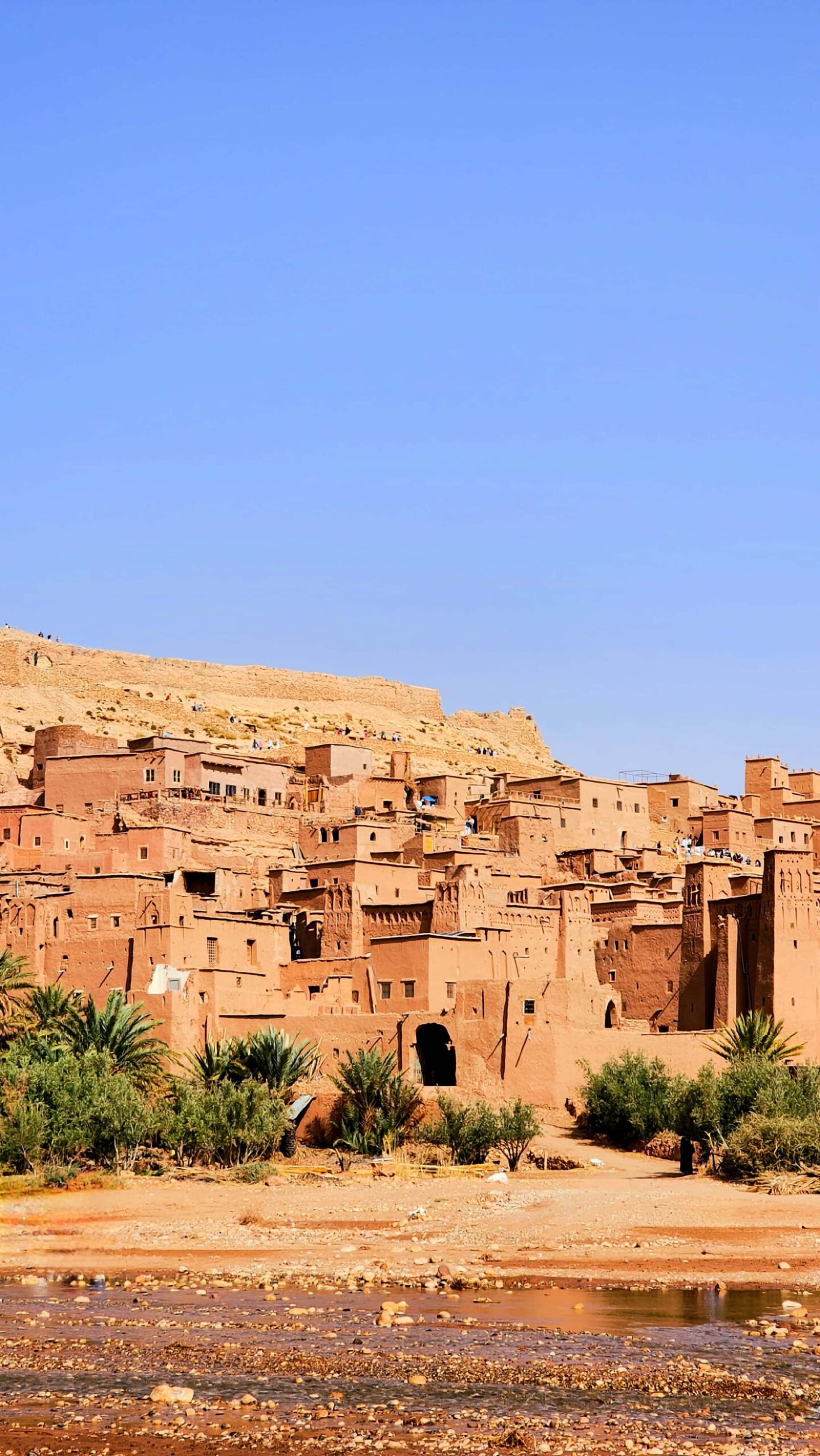
Casablanca’s Hassan II Mosque:
Mosques typically have specific architectural features, such as domes, minarets, and prayer halls, designed to facilitate prayer and create a sacred space for worshippers. It was commissioned by King Hassan 2 as a place for practicing Islam and getting closer to god. It is also open for visitors to admire Moroccan architecture and learn more about Islamic culture and Moroccan traditions. It’s truly a peaceful place where you can feel at ease.
Rabat’s Oudaias Kasbah:
As the capital city, Rabat exudes an air of elegance and sophistication. Explore the Kasbah of the Udayas, a picturesque fortress overlooking the Atlantic Ocean, and wander through the Andalusian Gardens, a tranquil oasis in the heart of the city. Don’t miss the Hassan Tower and Mausoleum of Mohammed V, architectural masterpieces that reflect Morocco’s rich history.
Rose Valley:
Rose Valley gets its name from the countless gardens of pink roses, it is one of the most underrated places in Morocco and is a much less visited Valley compared to the Dades and Todgha valleys. The Rose Valley sits at the foot of the High Atlas Mountains in Morocco, where the mountains meet the Dadès Valley. It is irrigated by the Asif M’Goun river and its main village is Kelaat M’Gouna which itself is named after the nearby Mount Mgoun.
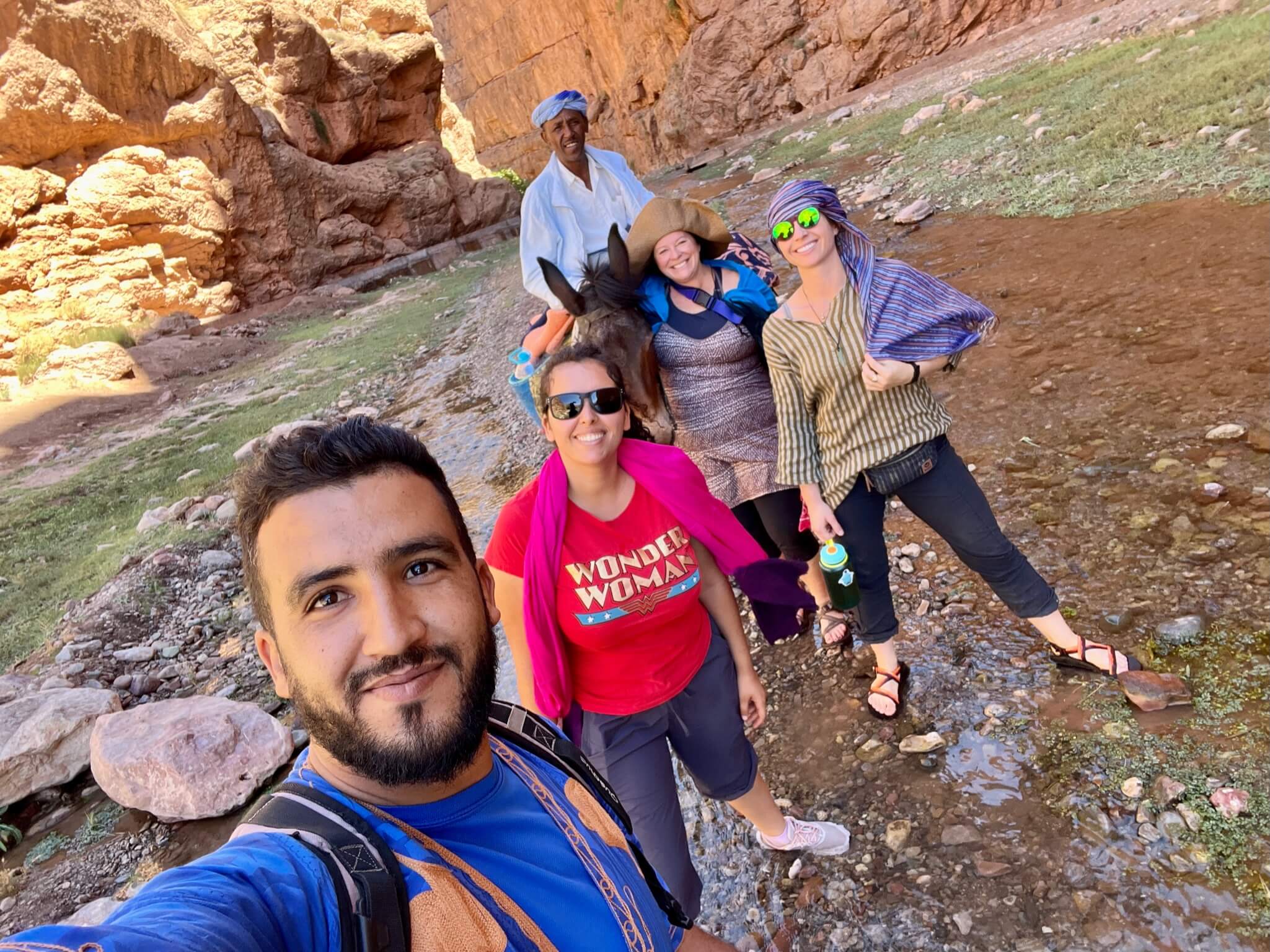
Ouzoud Falls:
one of the Top Tourist Attractions in Morocco, Near the town of Azila, the Ouzoud waterfalls stand as a beautiful natural attraction. With a height of 110 meters or about 360 feet, these falls are surrounded by scenic hiking trails, adding to their allure. Visitors can enjoy the experience by exploring the area’s natural pools, discovering the place on boat rides, and partaking in delightful picnics. The combination of these activities makes Ouzoud Waterfalls a truly enjoyable destination for all visitors.
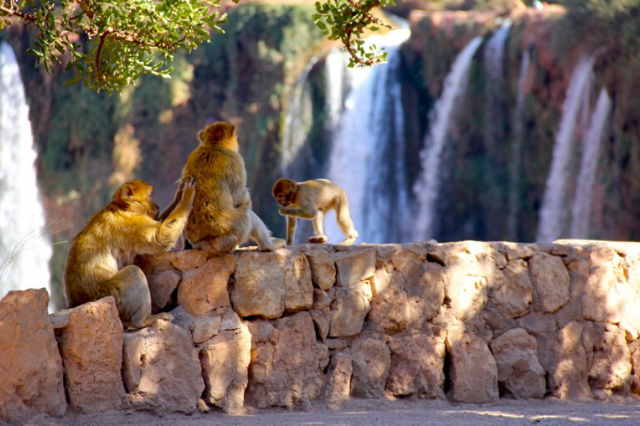
Ouarzazate:
The gate to the Great South will take you to the immense arid expanses of the Moroccan desert. When visiting Ouarzazate a stop at the kasbah of Taourirt, the ancient palace of the pasha of Marrakech, is mandatory. It faces the artisanal centre on the other side of avenue Mohammed V. This colossal adobe edifice shelters a true labyrinth of halls and stairways as well as sumptuous rooms. In the kasbahs fortified village, venture through the maze of shaded alleyways, the peaceful atmosphere here is very pleasant.
Todra Gorge:
is a series of river canyons, in the eastern part of the High Atlas Mountains in Morocco. You can find them near Tinerhir, a town full of abandoned mud castles and they’re only a couple of hours away from Merzouga, a small desert town famous for its camel trips in the Sahara.
Draa Valley:
is located to the south of the towns of Ouarzazate and Skoura in Morocco. The valley leads to the town of Zagora. Around here, you find the Erg Chigaga. This is a vast sand sea that is far larger than the Erg Chebbi located to the east around Merzouga. The Draa Valley is a delight to drive through. There are palm plantations aplenty, dramatic valley-hugging Kasbahs, and villages made from crumbling pisé (mud-brick) walls. There are some superb lodges within Zagora from where you can explore the desert beyond. From here, you can head off to a remote desert camp for the night.
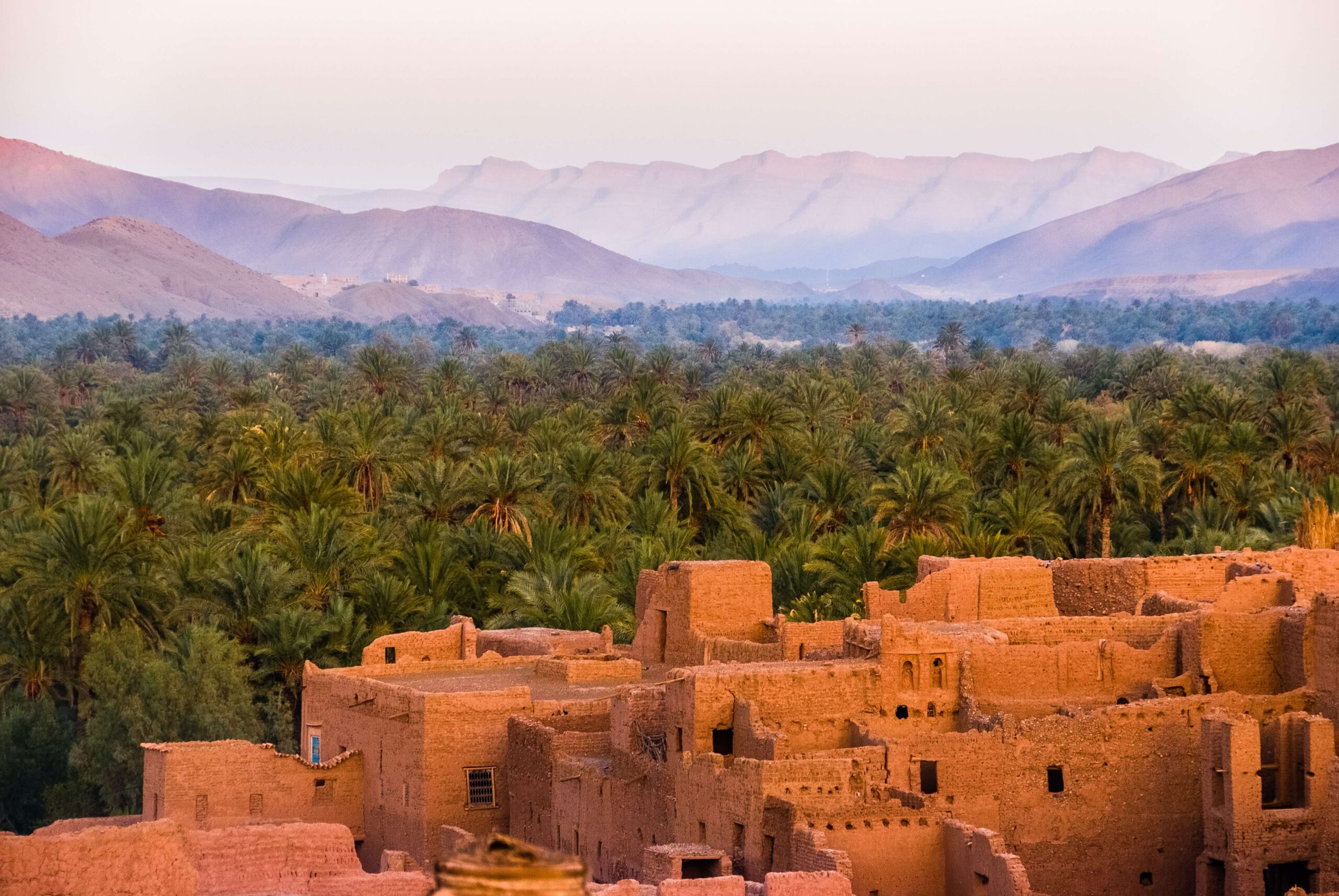
Agafay Desert: Top Tourist Attractions in Morocco
In fact, the Agafay Desert is not as famous as the Sahara Desert. It is a rocky desert with a mesmerizing view of the high Atlas mountains. It is important to note that the Agafay desert remains the best option for travelers who don’t have enough time but still want to experience some camel riding or quad, keep in mind that you won’t find the sand dunes there as it has more moon-like landscape resemblance. It is characterized by Hammadas which are an arid terrain of rocks and stones.
Whether you’re a history enthusiast, an adventure seeker, or a lover of cultural experiences, Morocco has something to offer everyone. From exploring ancient cities to venturing into the Sahara Desert, your Moroccan adventure will be unforgettable.
